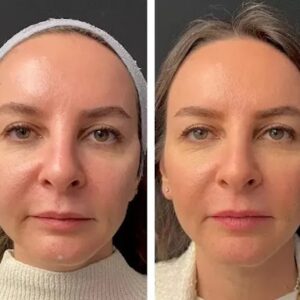Introduction
In the development of cosmetics, topical formulations, and advanced transdermal delivery systems, ensuring skin compatibility is a critical step before advancing a product toward larger-scale studies or market entry. The Human Skin Patch Test has become an established method for assessing potential skin irritation, sensitization, or formulation-related reactions caused by active ingredients, excipients, or final prototypes. For research teams and product developers, this test provides actionable data for formulation development, excipient selection, and safety assessment, supporting innovation while minimizing downstream risks in product pipelines.
What is a Human Skin Patch Test?
In R&D, a Human Skin Patch Test is typically a controlled study on healthy volunteers, designed to evaluate skin compatibility, irritation, or sensitization potential of topical formulations. It differs from clinical allergy diagnostics, serving mainly as a safety and tolerability screening tool. Small amounts of the test substance are applied to defined areas using occlusive or semi-occlusive patches, and the site is monitored for visible reactions such as redness, irritation, or erythema. Unlike routine allergy diagnostics intended for clinical use, patch testing in R&D and industrial formulation development serves as a screening and validation tool. It allows scientists to systematically compare different formulations, excipients, or concentrations, generating reproducible data for formulation optimization and ingredient screening.
Why the Human Skin Patch Test is Important for R&D
For research and development teams, the Human Skin Patch Test bridges laboratory studies with regulatory expectations for topical products. Early detection of irritancy or sensitization potential enables developers to refine formulations, adjust excipient ratios, or evaluate alternative delivery platforms before scaling up production. The data generated are also critical for regulatory documentation required in cosmetics and topical product submissions. Incorporating these tests into the R&D workflow ensures both scientific rigor and industry compliance, helping organizations streamline product development and reduce costly downstream modifications.
Applications in Cosmetics and Topical Product Development
In cosmetic and topical formulation research, the Human Skin Patch Test is widely applied to assess tolerability, ingredient compatibility, and prototype performance. This includes skincare products, sunscreens, color cosmetics, and innovative transdermal delivery systems such as microneedles or patch-based formulations. Results from these tests support ingredient screening, excipient selection, and formulation optimization, providing a foundation for informed decision-making. Many research teams benefit from a One-stop Solution for Cosmetics, which integrates formulation development, analytical characterization, and safety evaluation within a single platform, reducing development time while maintaining data reliability and reproducibility.
Testing Methods and Approaches
Several methodologies are commonly employed to assess skin compatibility in formulation development. The classical Patch Test involves applying the material under occlusive conditions for a defined period and monitoring for irritation or erythema. The Repeat Open Application Test (ROAT) evaluates sensitization potential by repeatedly applying low concentrations of the substance to the same open skin area over several days, mimicking real-life consumer use rather than a single occlusive exposure. For high-throughput or early-stage screening, in vitro skin models—such as reconstructed human epidermis or Franz diffusion cell systems—provide complementary data, such as irritation potential (reconstructed epidermis models) or skin permeation behavior (Franz diffusion cell systems), which can guide pre-clinical screening before conducting human patch studies. Combining these approaches allows R&D teams to generate a comprehensive safety profile, guiding material selection, formulation optimization, and transdermal delivery development before larger-scale studies.
Scientific and Commercial Value
Data from Human Skin Patch Tests offer both scientific insight and commercial advantages. From a research perspective, the tests provide reproducible data on skin-material interactions, supporting formulation refinement, excipient evaluation, and novel delivery platform comparison. Commercially, early identification of irritancy or sensitization risks helps minimize the risk of costly reformulations, regulatory delays, or market setbacks. Integrating these tests into the product development pipeline enables R&D teams to make informed decisions, accelerate formulation innovation, and ensure topical products meet safety and regulatory requirements efficiently.
CD Formulation’s Expertise in Human Skin Patch Testing
For organizations seeking a reliable partner in topical formulation testing, CD Formulation offers a comprehensive, multi-platform approach, spanning in vitro skin models to controlled Human Skin Patch Tests. Their experienced scientific team supports formulation assessment, ingredient screening, and safety evaluation, delivering actionable data to inform R&D strategies. By leveraging a One-stop Solution for Cosmetics, research and development teams can streamline workflows, reduce development time, and access a full spectrum of formulation and testing services within a single platform. CD Formulation ensures that cosmetic and topical products are optimized for performance, reproducibility, and safety, enabling innovation with scientific rigor.



